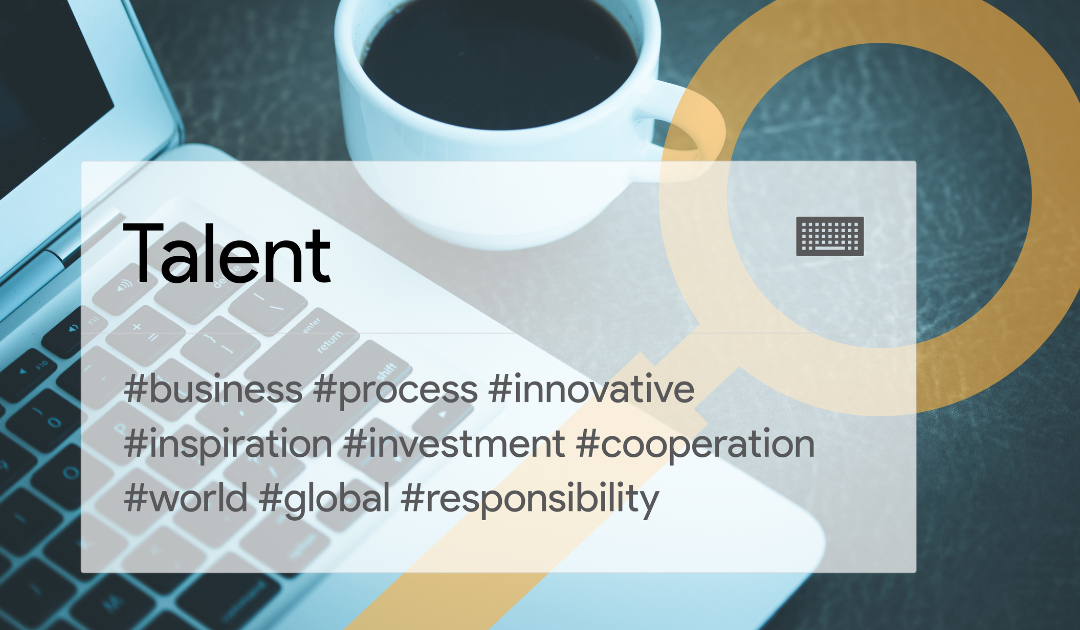
by Art Waskey | Nov 1, 2024 | Art of Sales Weekly, Featured
Look to your managers
Managers are the link to employee retention. The management consulting firm Gallup specializes in the science of employee engagement. Also, their surveys have found that people don’t leave companies, they leave managers.
If you have a turnover problem, look first to your managers. In their book “First, Break All the Rules,” authors Marcus Buckingham and Curt Coffman pose questions that help managers understand what their reports consider when evaluating how long they will stay working for their current employer.
Timing is important
I am currently working with a manager who is struggling to get a promotion for one of his sales reps. The rep has repeatedly asked for the opportunity to advance. Moreover, we looked at his record and determined he had the talent and skills required for a higher position. This analysis made his eligibility apparent, but we wanted to make sure the time was right to give him the opportunity.
Ask the right questions
I asked the manager to put himself in the rep’s position. Did he know what was expected of him and did he have the tools to accomplish what was asked of him? Was the rep’s work recognized and praised? Did he feel cared for by the team and what incentives did he have to stay? After reviewing his answers, the manager realized that if he wanted to ensure the rep stayed, it was time to offer him an advanced position.
Be ready to make changes
Lastly, make sure your company’s managers are in tune with their charges. They need to ask the right questions and be ready to make the changes necessary to retain employees.
The Art of Sales books have tips and tricks like the above. You can also subscribe to the FREE monthly articles here.

by Art Waskey | Oct 23, 2024 | Art of Sales Weekly, Featured
Employee retention
Employee retention is essential to a successful business. When I reflect on my time as a sales manager, I often think of the employees who got away. I wonder why some people stayed with the company, and others left. More specifically, I ponder why the people I wanted to stay left.
As a manager, I always felt responsible for those in my charge and strived to know them well. Inevitably, however, there were surprises. For example, there was a person I worked well with who was effective at growing the business. I was confident in his ability to make wise decisions. I thought he could come to me with anything, both personally and professionally. He did, or at least I thought he did until one day he told me that he felt our relationship had become distant. Then he accepted a job with a competitor that offered him a substantial increase to move on.
Time to reflect
Take the time to reflect on how to best keep your workforce stable. There are many good books that can help clarify the many “whys” of business. I recently finished reading “First, Break All the Rules” by Marcus Buckingham and Curt Coffman. It helped me to better understand why people leave a job.
Measuring Stick for Managers
Buckingham and Coffman developed the following questions and called them their Measuring Stick for Managers. This list helps managers understand what their reports consider when evaluating how long they will stay working for their current employer.
Here are six powerful questions to ask when considering whether to stay with your job:
- Do I know what is expected of me at work?
- Do I have the materials and equipment I need to do my work right?
- Do I have the opportunity to do what I do best every day?
- In the last seven days, have I received recognition or praise for good work?
- Does my supervisor, or someone at work, seem to care about me as a person?
- Is there someone at work who encourages my development?
Avoid the loss
The rep who left my company in the example above returned 2 years later asking to rejoin us. He was unhappy with his current manager. We gladly rehired him and he went on to have a successful career with us. Had I considered the six questions above before he left, I could have avoided losing him for those two years. Remember to keep a close relationship with your employees and understand what inspires them to work for you. In that way, you can ensure employee retention.
Get tips and tricks like the above in The Art of Sales books. Or subscribe to the FREE monthly articles here.

by Art Waskey | Oct 16, 2024 | Art of Sales Weekly, Featured
A change in mindset
How many times have your problems kept you awake at night? Worrying about issues saps your energy and brings on insomnia. This was my experience all too often until I learned how to change my mindset. I stopped meditating on my problems and began to look at them as opportunities.
Change your perspective
My father often counseled me to change my perspective on an issue in order to solve a problem. I found that when I made a conscious decision to change how I looked at things, my outlook improved.
Four steps
I advise that you look at hindrances in these four ways:
- View the hindrance as an opportunity – Change your perspective on the issue that is consuming you. See the roadblock as an opportunity to find a new avenue to success. Positive energy will create a pathway to a solution. In my case, as a Christian, I pray for guidance on negative matters and my mind resets to anticipating more positive outcomes.
- Believe in your ability – What actually keeps you up at night is self-doubt. Remind yourself that you inherently can do good things. That shift in thinking helps you find the right solution and empowers you to tackle bigger goals.
- Focus on solutions – Every problem has a solution. By assuming an optimistic outlook, you release stress and gain the energy needed to focus on the correct conclusion.
- Calculate risk – Assure yourself that you have the ability and focus to problem solve. This allows you to properly analyze the calculated risk versus reward of your solutions in a clear-headed manner.
Problems solved
Viewing problems in these four ways can be instrumental in solving business concerns. I recently consulted with a client who faced a major obstruction that threatened the future of his business. We carefully outlined the problem in writing. Then we went to work. The client’s problem became an opportunity when we changed our perspective, believed in the client’s ability, focused on solutions, and calculated risk for rewards.
Get tips and tricks like the above in The Art of Sales books. Or subscribe to the FREE monthly articles here.

by Art Waskey | Oct 2, 2024 | Art of Sales Weekly, Featured
As managers, we are successful when those who are in charge make the most of their talents. Identifying each individual’s talents and aligning them with their positions, however, is a tall order, as each person is unique.
Here are some tips on how to maximize talent to maximize success:
- Find the right position. Some sales territories need assertive and ego-driven individuals to maximize potential, while others require patient, relationship-building salespeople for nurturing. Both types of people must have a desire and natural intuition to solve problems with and through personal contact. To do that, they need to be self-reliant, self-motivated, and self-directed. Learn the goals and passions of your employees and allow them to find the best positions in your organization to maximize their talent.
- The right position may not be in house. If an employee isn’t a good fit for your company, help them find opportunities elsewhere. Avoid moving people to another area within the company in an attempt to find a fit where one doesn’t exist. Promoting an employee to find a “better fit” only exacerbates existing incompatibilities and should never occur.
- Don’t try to change people. In their book, First, Break All The Rules, authors Marcus Buckingham and Curt Coffman suggest, “People don’t change that much. Don’t waste time trying to put in what was left out. Try to draw out what was left in. You will find that is hard enough.”
- Make the most of each person’s talents. Everyone has a unique set of talents, patterns of behavior, passions, and yearnings. Every salesperson has a distinct source of motivation and style of persuasion. A good manager’s job is to make the most of these talents, person by person. Acknowledge weaknesses but don’t try to change them. Focus on maximizing strengths, especially with your best performers.
Maximizing Talent Maximizes Success
Lastly, as managers, we are successful when those we are in charge of can make the most of their talents. Maximizing talents maximizes success.
Get tips and tricks like the above in The Art of Sales books. Or subscribe to the FREE monthly articles here.

by Art Waskey | Sep 26, 2024 | Art of Sales Weekly, Featured
A poor fit
As managers, we are responsible for helping those we oversee succeed in jobs that match their talents. Sometimes we find we are dealing with a good person who is a poor fit for the position he is in. I encountered this early in my career as a sales manager. I worked with a rep who had great technical skills and product knowledge, but his sales territory never hit targeted revenues. He didn’t have the talent for sales. I had to let him know he had 60 days to find another job. He was not pleased. Knowing his technical skills were good, however, I was able to get him an interview with a major manufacturer that was hiring an engineer.
The importance of talent
Gallup defined talent as “a recurring pattern of thought, feeling, or behavior that can be productively applied” (“How Great Managers Define Talent,” Business Journal, November 11, 1999). Many people don’t realize their true talent, yet it is the prerequisite for excellence in their role in life. It is how we form opinions, feel the emotions of others, handle confrontations, and pick up subtle differences in each of life’s interactions.
Showcasing talent
Identifying whether a person is competitive, generous, or ego-driven helps define the nature of their talent. As a sales manager, your responsibility is to steer an employee toward success. As I matured in leading others, I recognized the importance of helping each person I worked with find a position that showcased their talents.
The talent match
Ten years after I had let the rep in my opening story go, I saw him at a national convention. Fearing a confrontation, I tried to avoid him. He chased me down, but instead of horror, I received a hug. He apologized for his previous behavior when I had to let him go and was now the engineering manager for the manufacturing company I had recommended. Lastly, he had embraced the right opportunity and found a good fit. It was a talent match.
Get tips and tricks like the above in The Art of Sales books. Or subscribe to the FREE monthly articles here.

by Art Waskey | Sep 18, 2024 | Art of Sales Weekly, Featured
As a Sales Manager, I learned the importance of spending time with the right people. While it is logical to focus attention on reps who may be underperforming, to help them improve results, it is equally important to acknowledge the work of your best reps.
The superstar
The greatest salesperson I had the privilege of managing complained that I didn’t praise her enough. When we made calls together, we invariably either closed new business or picked up a large order from an existing account. We clicked with decision-makers and would end most days excited and motivated. Yet, she felt I didn’t spend as much time with her as I did with some of the other lower-performing reps. My superstar was right to point this out. Here’s why.
Spend time with producers
In their book, First, Break All the Rules by Marcus Buckingham & Curt Coffman, I was reminded of the importance of giving most of your attention to those who produce. If you spend your efforts with those struggling and ignore your best performers, you can inadvertently alter the behavior of those who get you results. Remember, your stars are who they are because they have talent and drive. They deserve your best because they are your best.
Why invest in the best?
In interviews with great managers, Buckingham and Coffman were told that investing in their best was,
- the fairest thing to do,
- the best way to learn; and
- the only way to stay focused on excellence.
Lesson learned
“When you see your stars acting up, it is a sure sign that you have been paying attention to the wrong people and the wrong behaviors”, say Buckingham and Coffman.
A lesson learned. Invest more time with your best because they are deserving of it.
Get tips and tricks like the above in The Art of Sales books. Or subscribe to the FREE monthly articles here.






